How to read rhythms and note values in sheet music
Learn all about note values, time signatures, measures, what 4/4 means, what tempo or BPM to use and much more!
Even if you’ve always find reading rhythms in sheet music very confusing, I bet that after reading this article it will be clear for you.
How long should a quarter note be?
How to know at what BPM to play a piece?
What do terms like allegro, vivace and largo mean and how fast are those tempi exactly?
We’ll get to all of that, but first things first…
Let’s start with the time signature you see at the beginning of a piece of sheet music
 Time signatures are made up of two numbers. The top number indicates how many beats are in each measure and the bottom number indicates which note is equivalent to a beat. For example, in the time signature ¾, the top number 3 tells us there are 3 beats in the measure, and the bottom number 4 tells us the quarter note gets the beat. If you were to see a 2 on the bottom, that indicates the half note gets the beat, an 8 indicates that the eighth note gets the beat, and a 16 indicates that the sixteenth note gets the beat. You can think of the beat as one metronome click.
Time signatures are made up of two numbers. The top number indicates how many beats are in each measure and the bottom number indicates which note is equivalent to a beat. For example, in the time signature ¾, the top number 3 tells us there are 3 beats in the measure, and the bottom number 4 tells us the quarter note gets the beat. If you were to see a 2 on the bottom, that indicates the half note gets the beat, an 8 indicates that the eighth note gets the beat, and a 16 indicates that the sixteenth note gets the beat. You can think of the beat as one metronome click.
 The standard rhythm is 4/4. If you see a big e in front of the music where the measure usually is, the measure is 4/4. A waltz is usually a 3/4 measure. A tango is often a 2/4 measure.
The standard rhythm is 4/4. If you see a big e in front of the music where the measure usually is, the measure is 4/4. A waltz is usually a 3/4 measure. A tango is often a 2/4 measure.
Learning point: the time signature tells us what the beat is and how many notes of that beats are in a measure. This does not say much about the speed or the tempo yet.
How does the time signature relate to the metronome?
Practicing with a metronome like my free online metronome right here is very effective to learn the rhythm of the piece of music you are practicing.
Metronomes emit a higher-pitched click on the first beat of each measure, which is why it is important to set them to the time signature of the piece you’re practicing. Accenting the first beat of each measure is helpful because it makes it very easy to tell if you are with the metronome or not. Say you were in the middle of a measure and hear the higher-pitched click indicating beat one; you will immediately know that your tempo is off. It is up to you to determine if you were playing too fast or too slow, and adjust your tempo accordingly.
Note Values
In a piece of music you play notes of different lengths
We know the beat from the time signature, but in music there will be longer and shorter notes than the beat. This is related to the note value.
The shape of the note tells us the note value
Learning point: Note values let us know when a note should be played and how long a note should be held for.
Here are some of the most common rhythms and how many beats they get in a 4/4 measure.
A whole note gets four beats.
A half note gets two beats.
A quarter note gets one beat.
An eighth note gets half a beat. (Two eighth notes equal one beat).
A sixteenth note gets one-quarter of a beat. (Four sixteenth notes equal one beat).
Dotted Rhythms
Whenever you see a dot next to a note (directly next to it, not under or over it as that means something else entirely), it tells us to add half of that note’s value to that note. Let’s use a dotted half note as an example. A half note gets two beats- half of two is one, so I add one beat to the note getting a total duration of three beats.
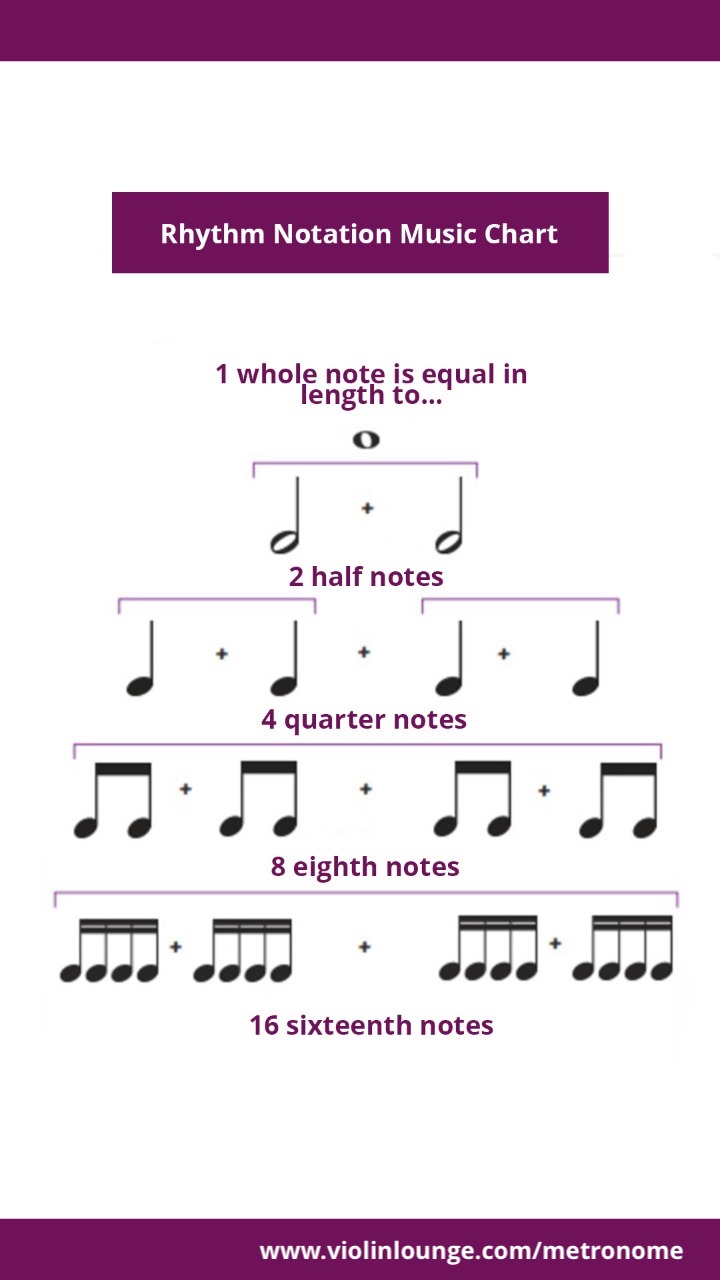
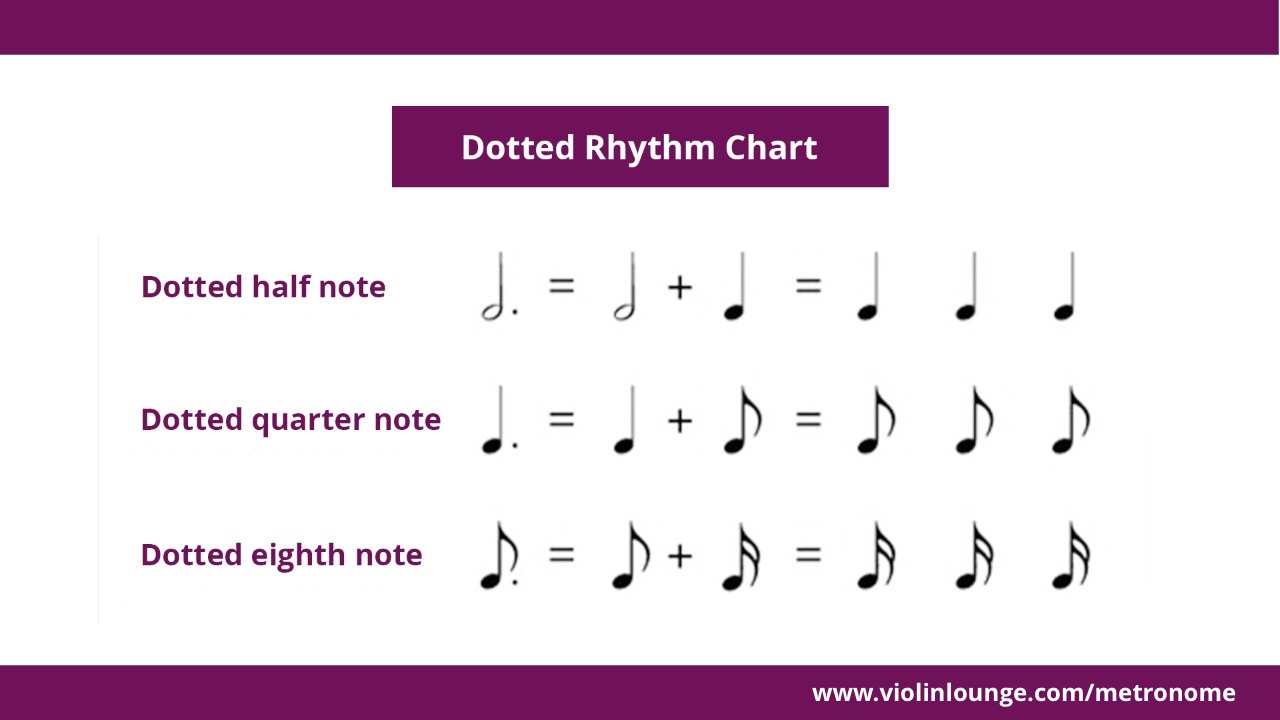
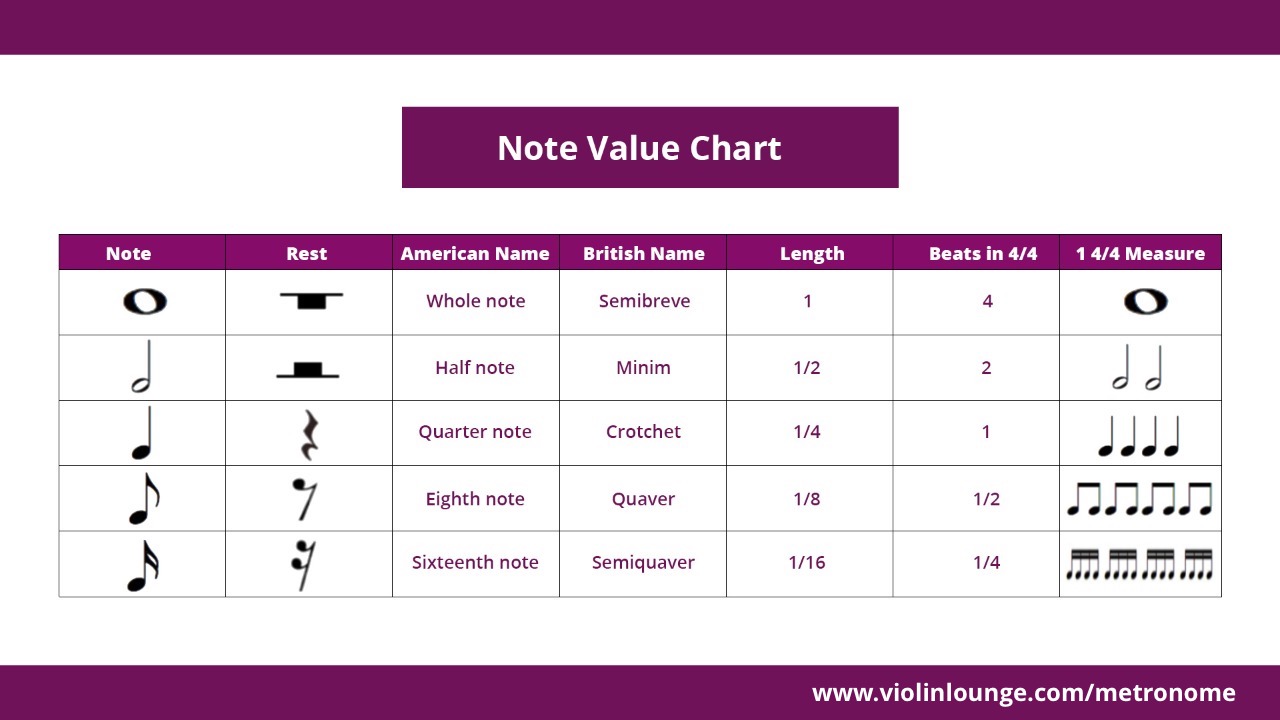
Easy way to learn note values for children
I teach note values to my young students with the rhythm pies. In Dutch (I live in Holland), the word for music note (noot) is the same as nut, so I ‘bake’ my young students ‘nut cakes’. Mind that for adult beginners these nut cakes can also be very handy to make things easy to digest (pun intended).
You can see the cake as a measure (this is indicated by the time signature in sheet music) and you fill the cake with ‘nuts’ (notes) of different note values.
Whole note
(semibreve)
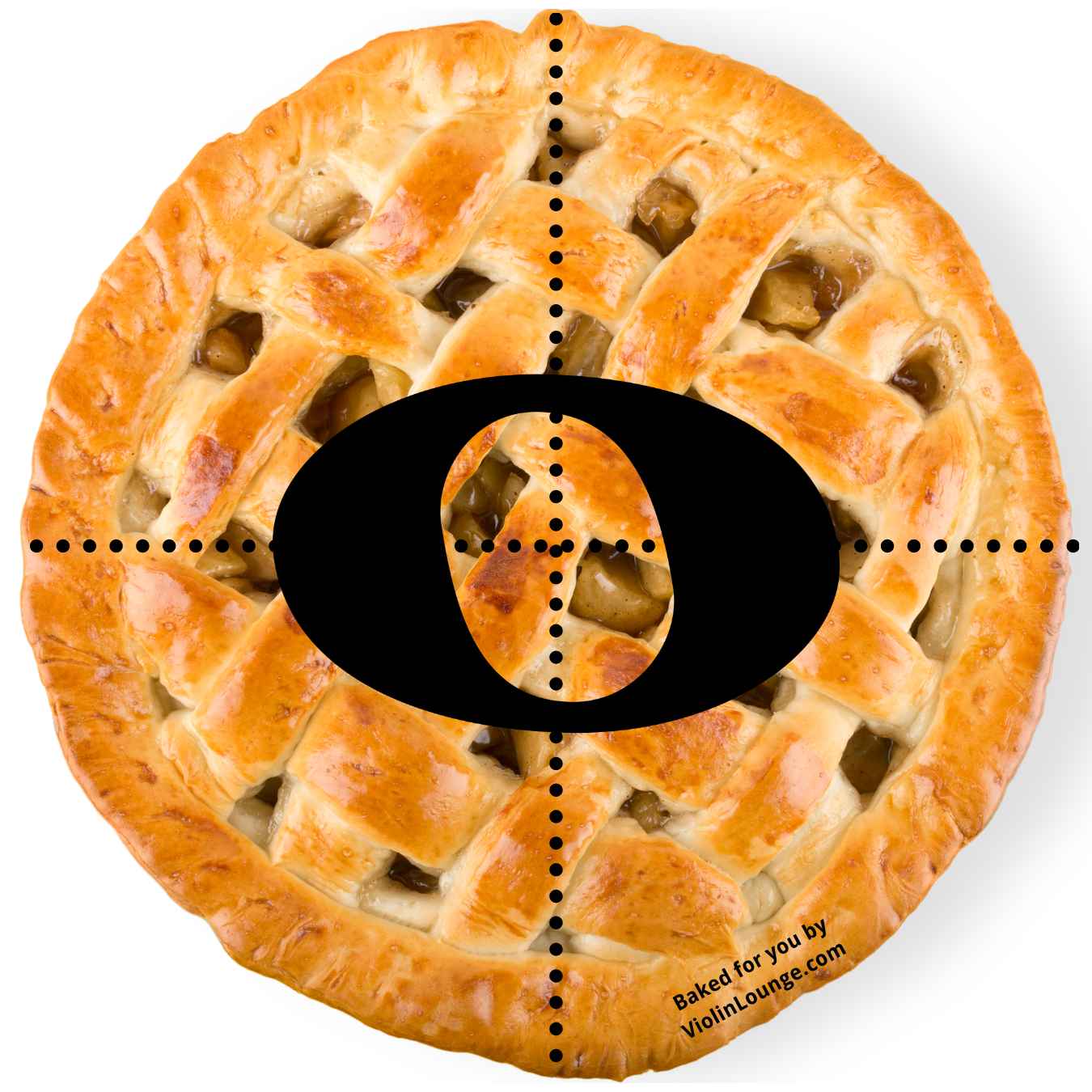
Half note
(minim)
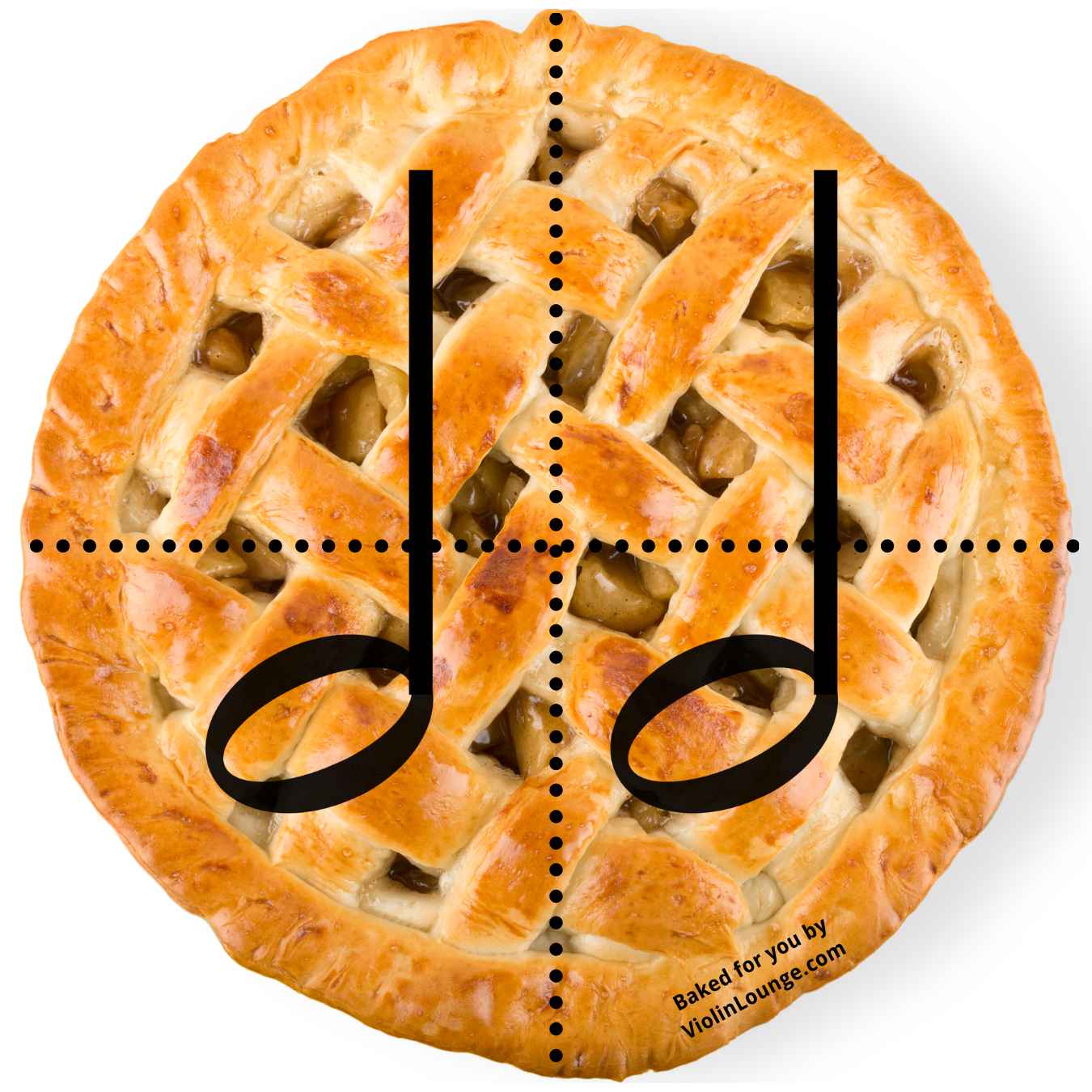
Quarter note
(crotchet)
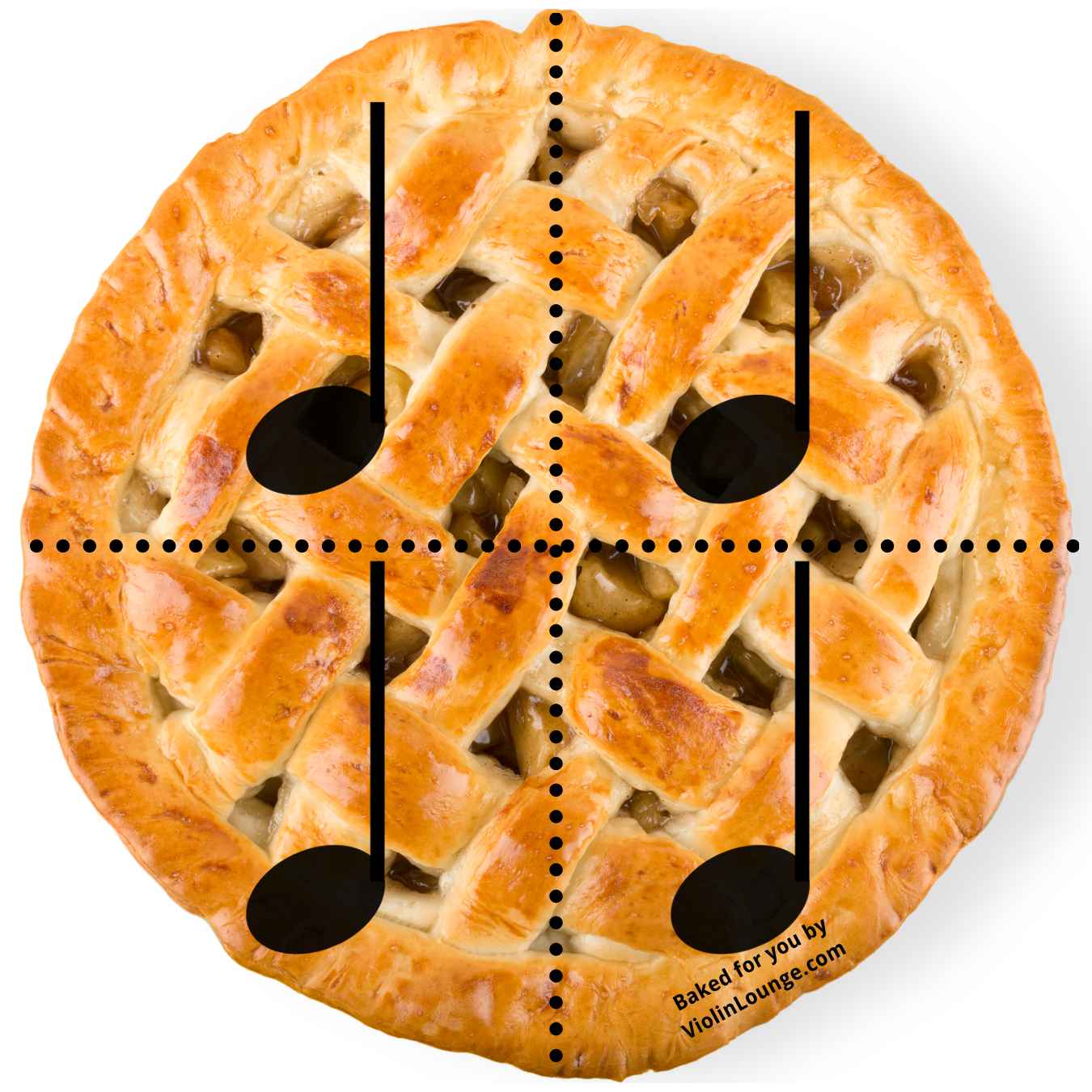
Eighth note
(quaver)
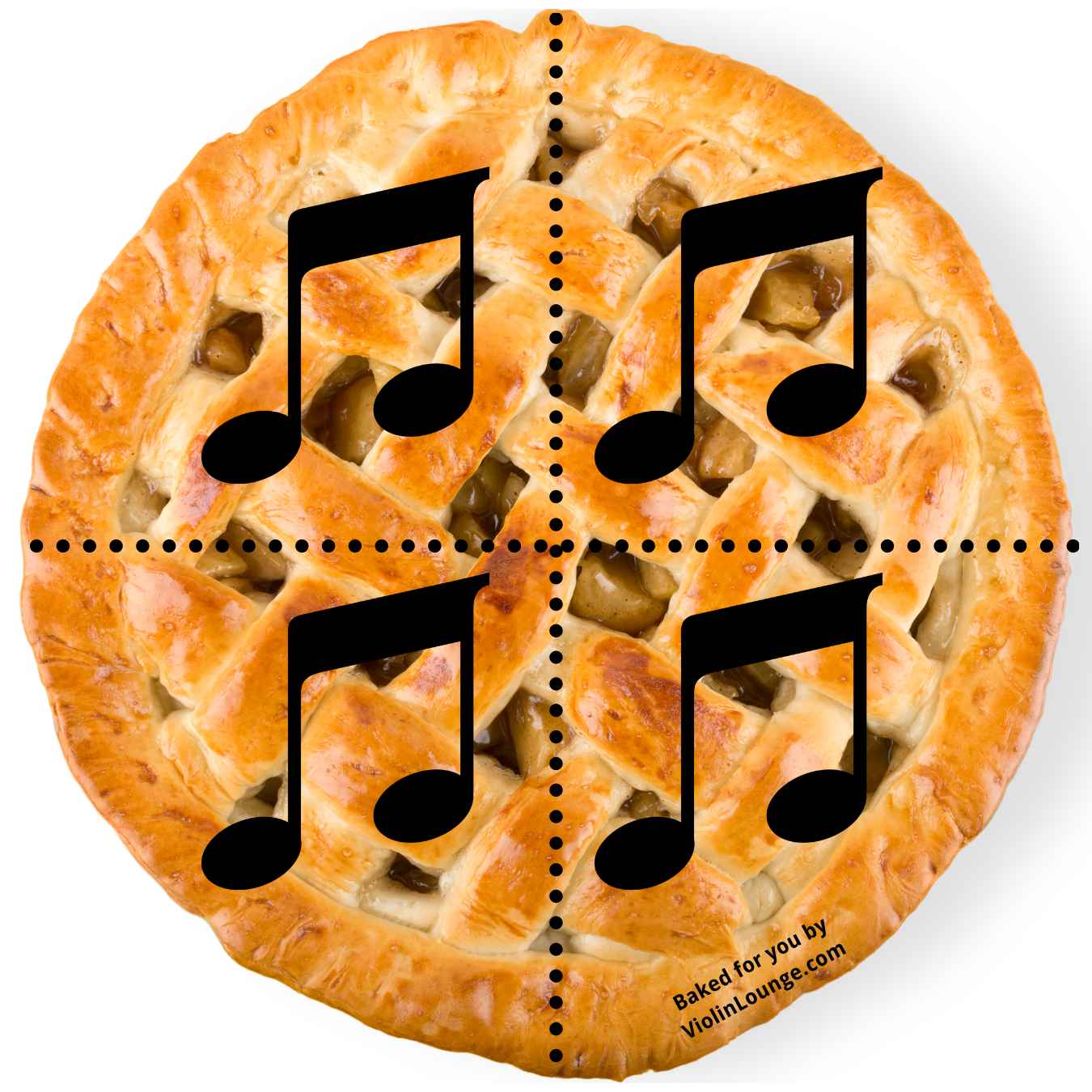
Sixteenth note
(semiquaver)
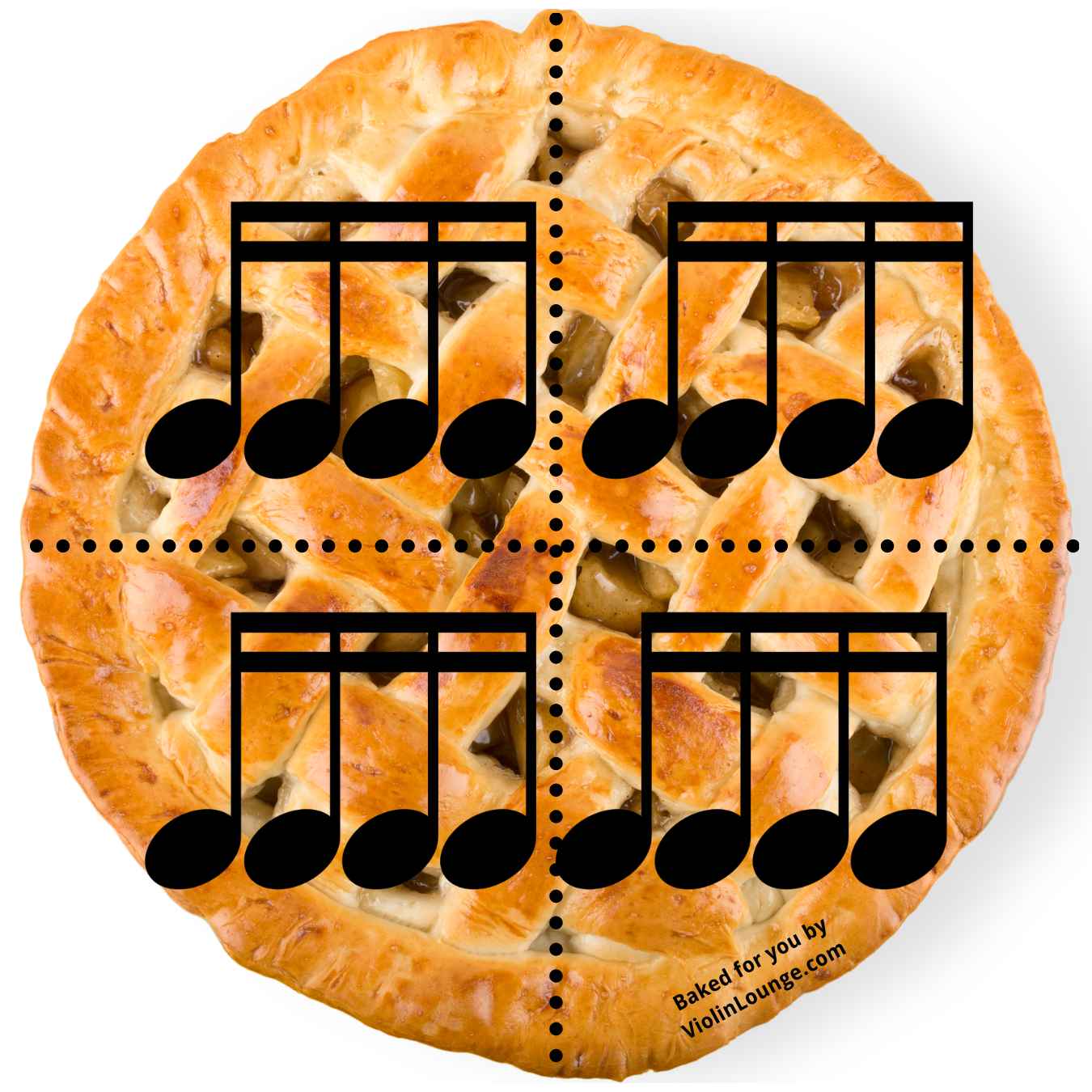
Learn rhythms in sheet music
You can bake your own rhythm cake as well. Below are some examples of rhythm cakes with various note values. You can create one for each piece you play to know how the note values you see in that piece fit in the time signature. I’ve added two blank rhythm cakes for 3/4 and 4/4 in a higher resolution. Just right click, save the cake to your computer and print it in whatever size you want.
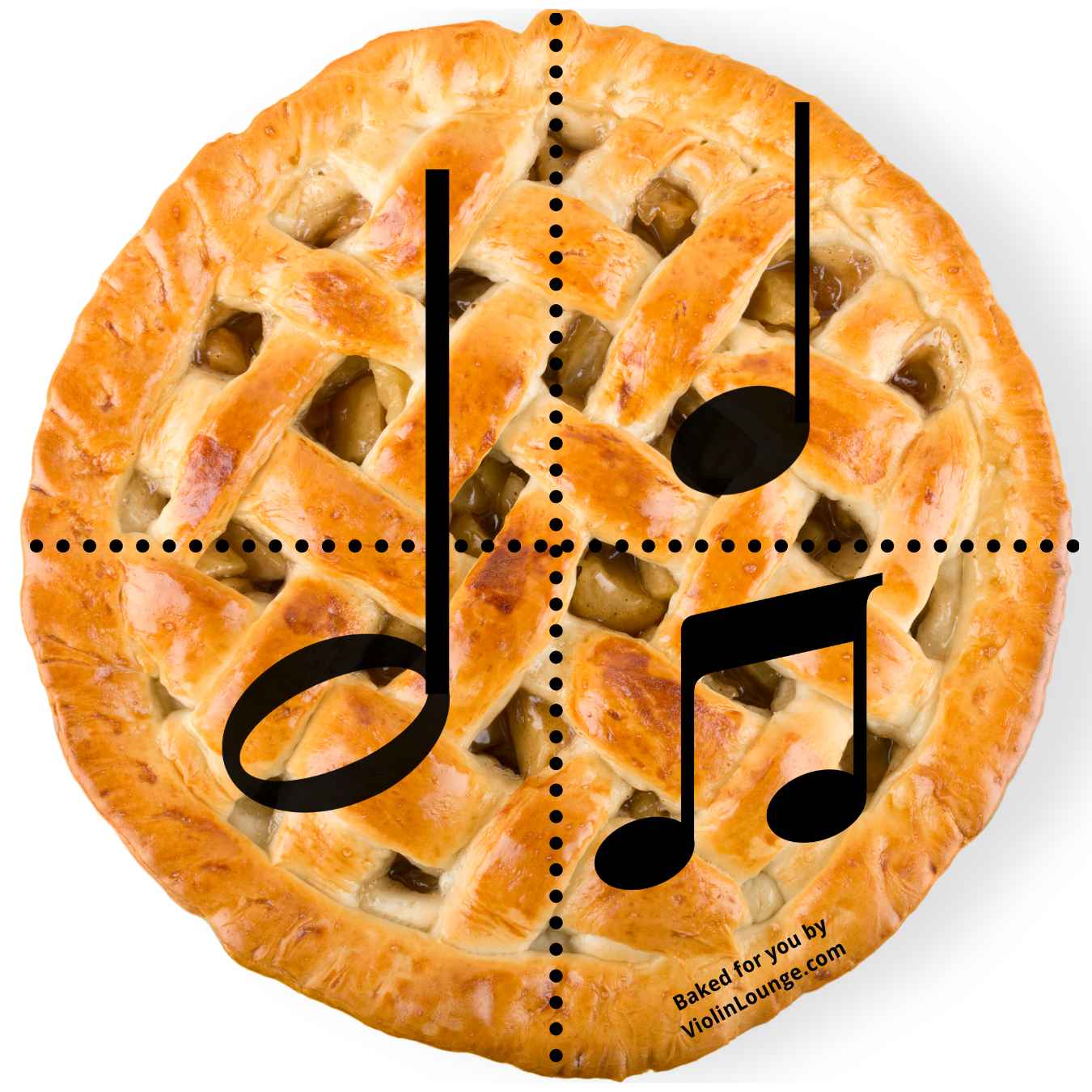
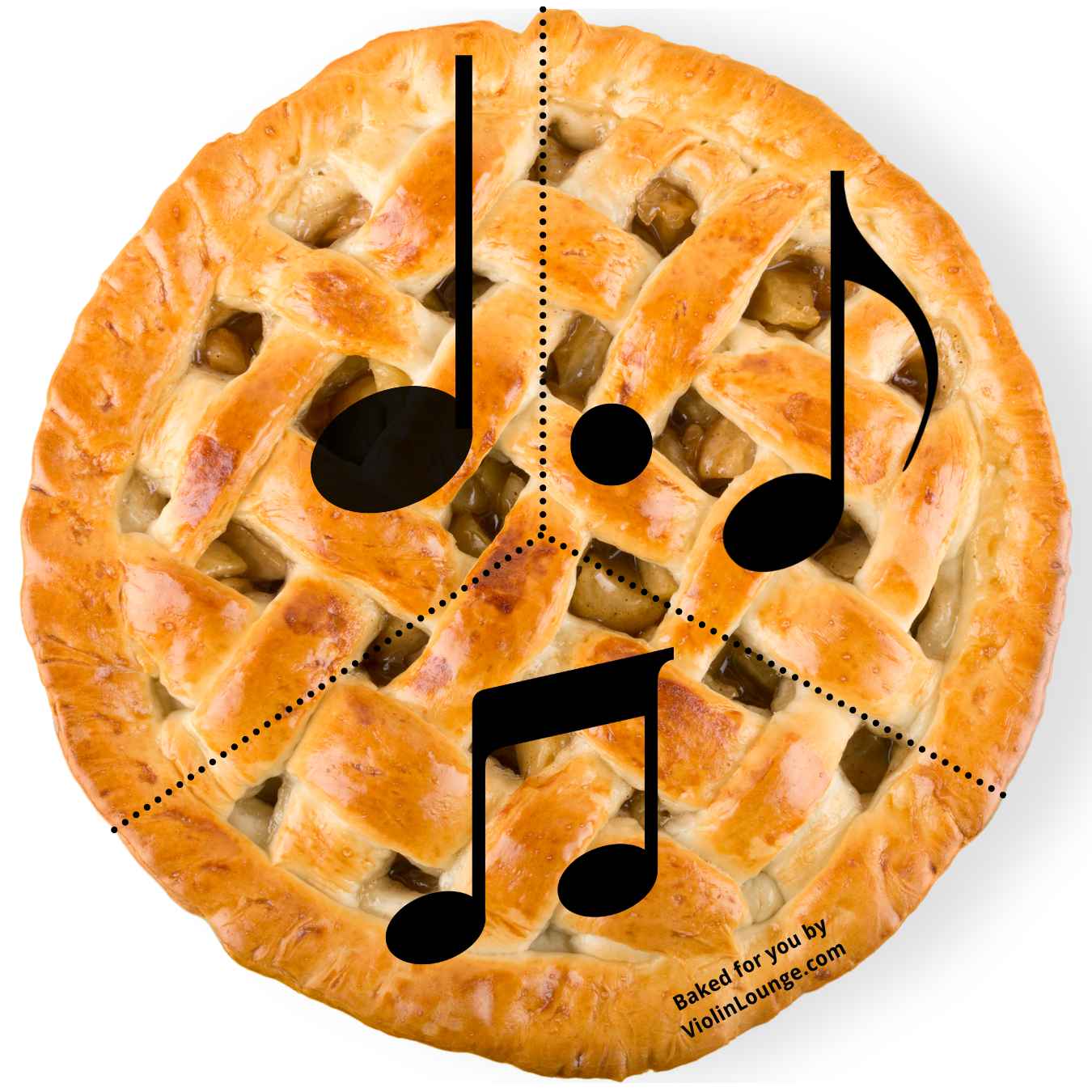
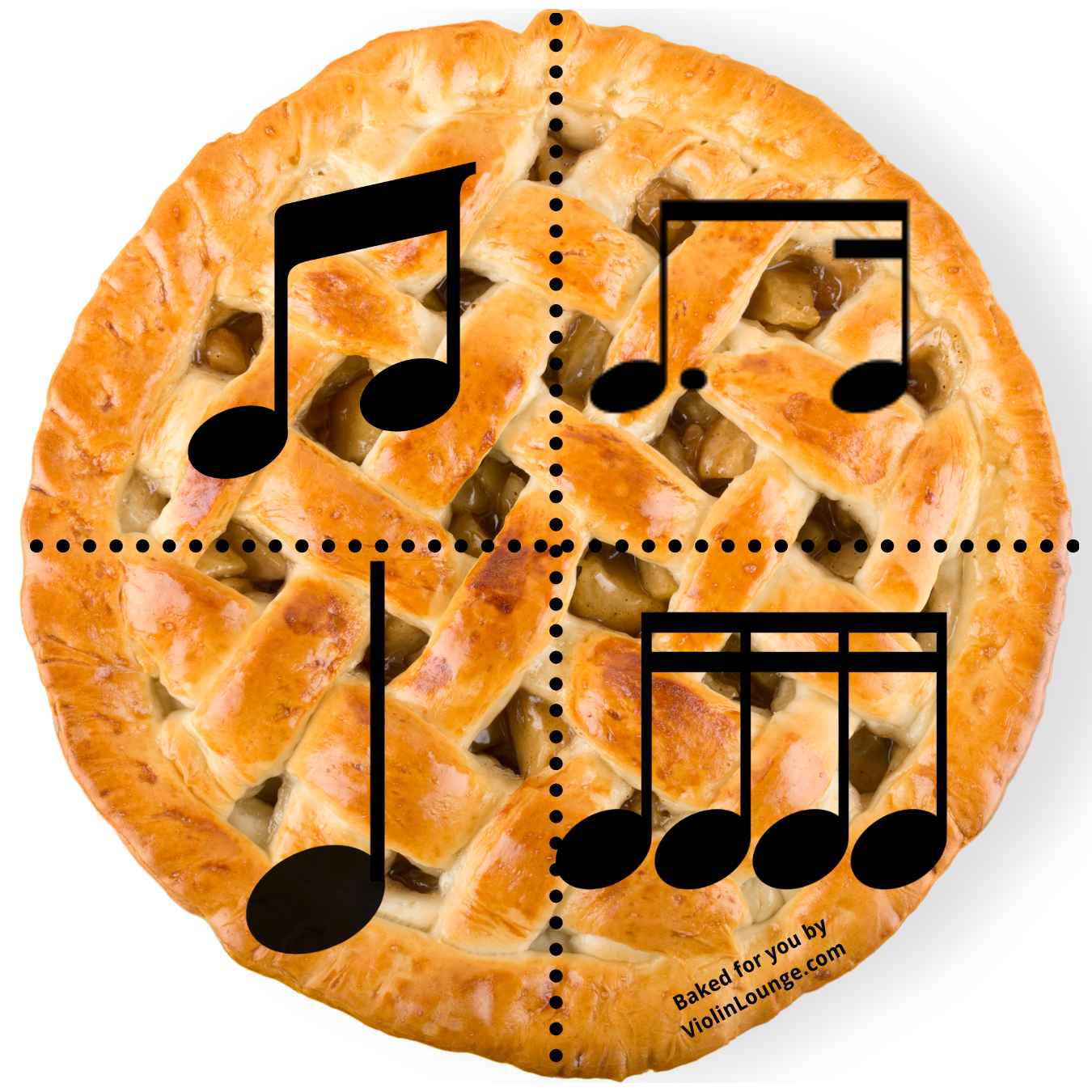
4/4 Measure printable
Right click to save on your computer and print at the desired size.
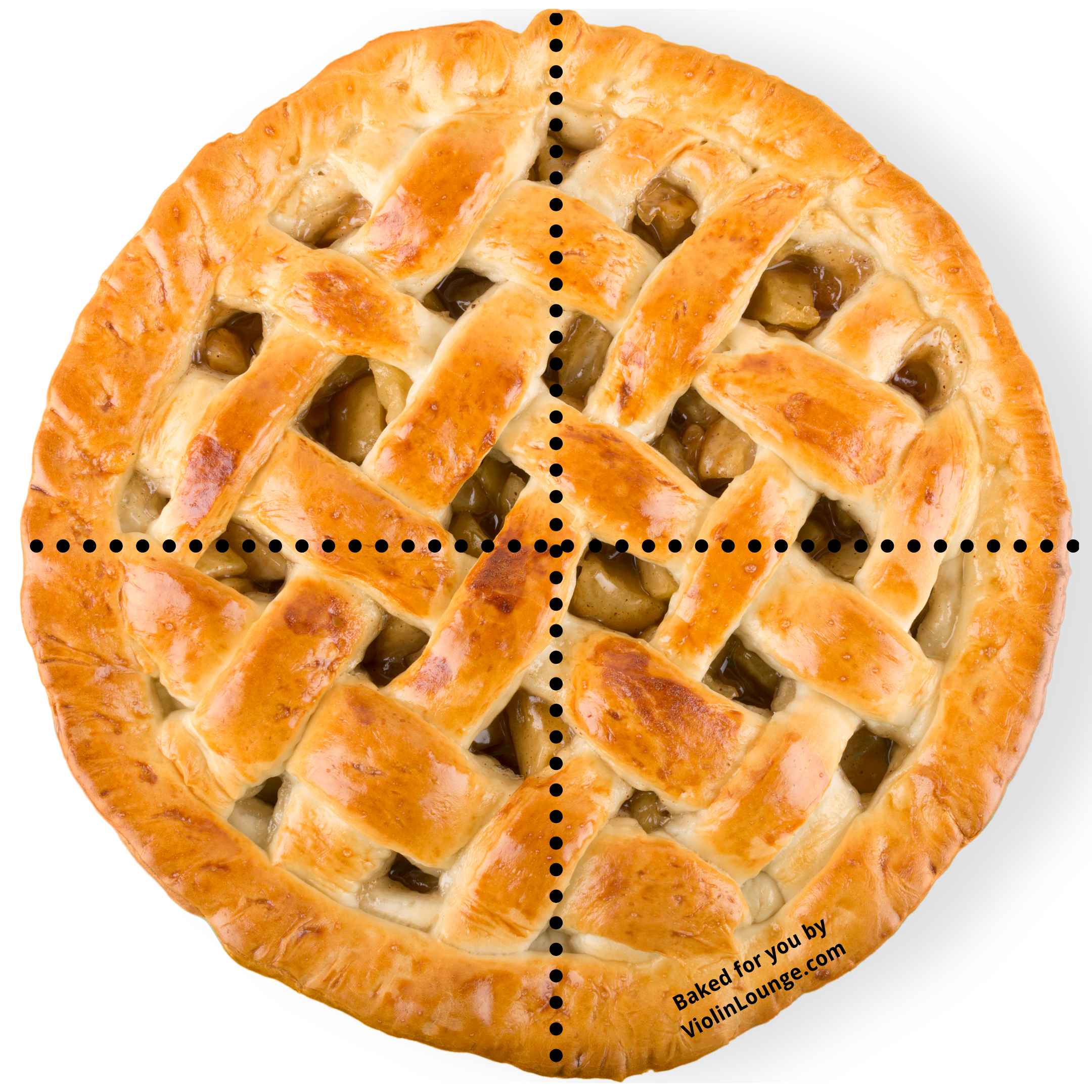
3/4 Measure printable
Right click to save on your computer and print at the desired size.
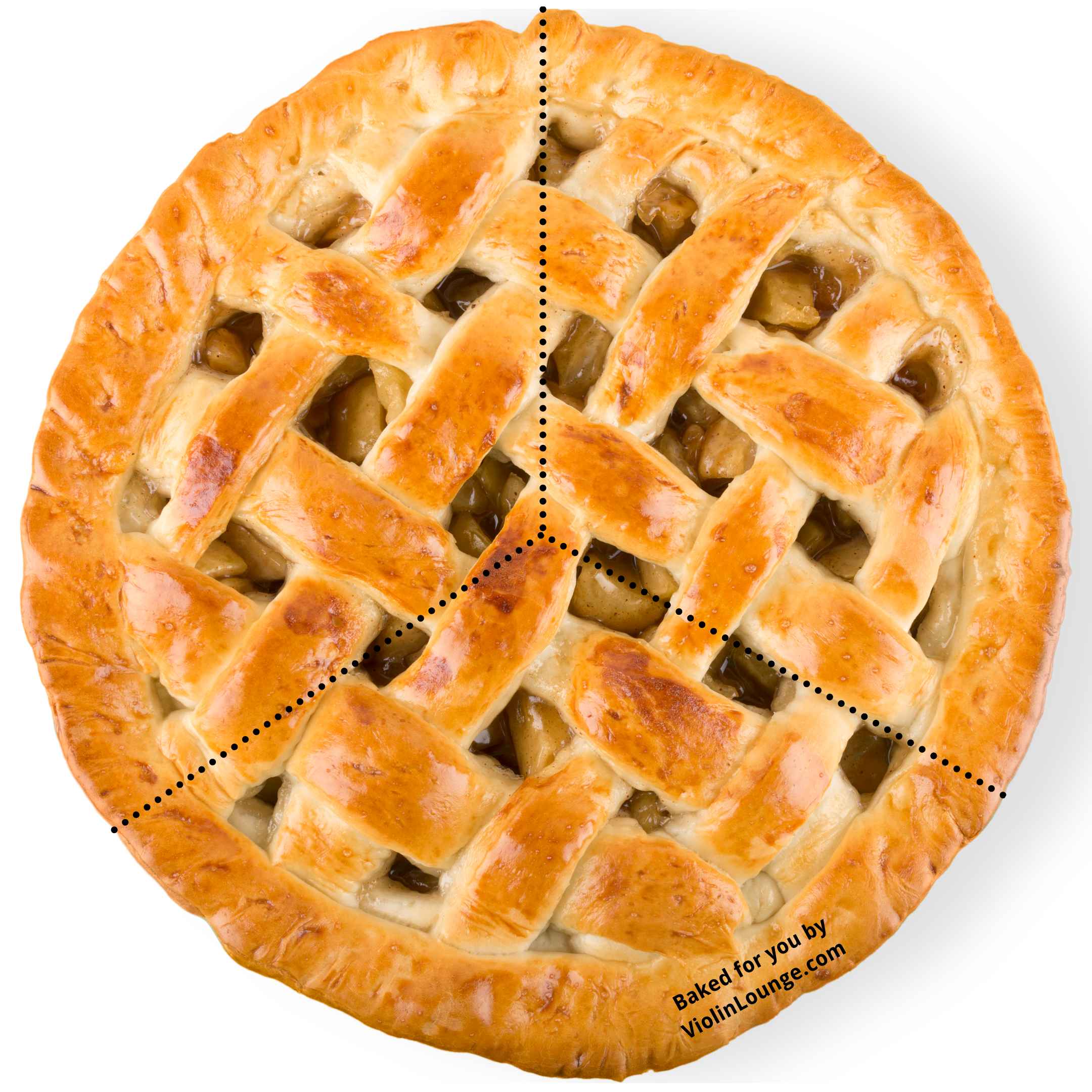
How fast (what tempo) should I play a piece of sheet music
Now you’ve learned all about the note values and time signatures, but they don’t tell you yet at what speed to play. You can see it as an elastic band with lines written on it. When you stretch the band you play the same notes in a lower tempo. When you don’t stretch, you play exactly the same music at a higher tempo.
What BPM should I use?
BPM stands for ‘beats per minute’, which tells you the tempo.
This totally depends on the piece! Also different performers might choose to play the same piece at a different speed. It’s not carved in stone. For example look up different videos of the Mendelssohn concerto and note that not all videos are of the same length.
Learning point: The BPM is not defined by the time signature, but instead by the tempo marking.
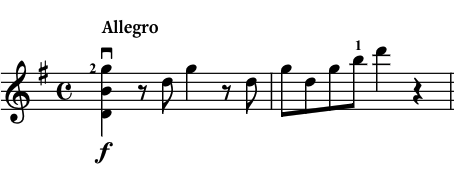 The tempo marking is most often an Italian term notated at the beginning of the piece. In longer pieces, you may also find that the tempo changes and new tempo markings are given at the beginning of certain sections. Additionally, some pieces may indicate the BPM at the beginning of the piece in which case, you can easily see exactly what speed to use!
The tempo marking is most often an Italian term notated at the beginning of the piece. In longer pieces, you may also find that the tempo changes and new tempo markings are given at the beginning of certain sections. Additionally, some pieces may indicate the BPM at the beginning of the piece in which case, you can easily see exactly what speed to use!
If there is no speed or tempo marking indicated, listen to recordings to get a general feel for the tempo. You can use your metronome to click along to the recording and adjust until you find a BPM that is relatively close to what you hear.
Below we’ll go a bit deeper into common tempo markings you find in violin sheet music.
Common Tempo Markings in Music
When you embarked on your violin journey, did you know you’d have to learn a bit of Italian too?! Tempo markings are generally (but not always) in Italian, simply because the majority of the 17th-century composers were Italian, which was the time when tempo markings were first extensively used and codified.
Here is a comprehensive list of Italian tempo markings and their corresponding BPMs:
Slow Tempo Markings
Tempo Marking
Translation
Beats per Minute (BPM)
Moderate Tempo Markings
Tempo Marking
Translation
Beats per Minute (BPM)
Fast Tempo Markings
Tempo Marking
Translation
Beats per Minute (BPM)
How to practice your rhythm skills
A great tool to practice your rhythm skills is to use a metronome like my free online metronome right here.
- Set your metronome at 60 BPM.
- Practice clapping with the metronome on various simple rhythms. Start with quarter notes (one clap per click), then half notes (one clap per two clicks), and then eighth notes (two claps per click).
- Practice playing these simple rhythms on your instrument on one note (on the violin for example open strings)
- Practice scales in these simple rhythms.
As you’re getting used to playing your instrument at a steady beat, explore some more complex rhythms. See if you can play the dotted rhythms on this page for example. This is why I’ve added subdivisions to my free online metronome, so you can check yourself playing various rhythmic patterns.
How to practice the rhythm of pieces you play
After the exercises above you are more familiar playing different tempi and rhythmic patterns along with the metronome. Don’t worry if it confuses you at first. It takes some time to get used to practicing with a metronome before you really start benefitting from it.
First play some pieces you already know along with the metronome, just to see if you can stay in sync. After that practice some pieces you are still learning with the metronome.
Happy practicing!
Be sure to share this article with your music friends.

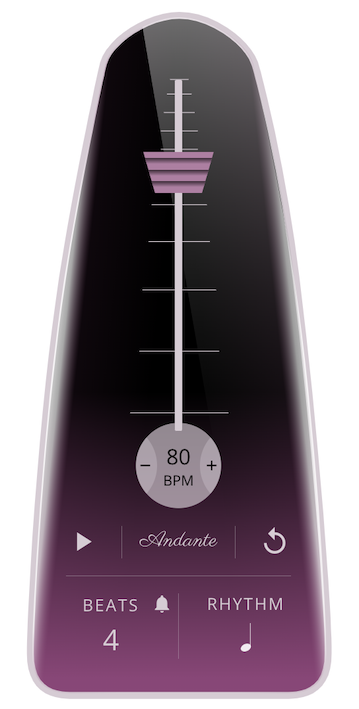
Thank you so much for this! This while section is very helpful.
I want to learn how to read music before jumping back into learning the violin and this section explains this in depth and it is wasy to understand.
Happy to help!
Thank you so much for making this with such as much effort! I´m learning violin this year, your course is a real blessing for a begginer. This really makes me enjoy my learning journey!
Wishing you the best from a Caribbean island. THANK YOU
You’re so welcome!